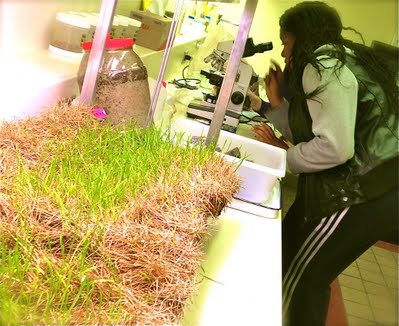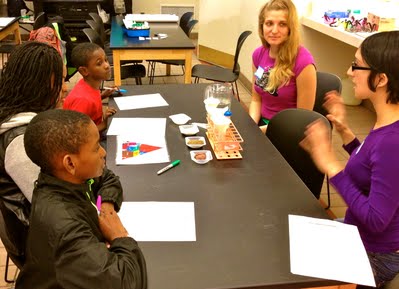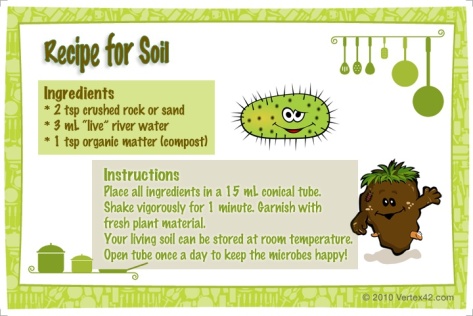The more forest ecologists learn about plant nutrients, the more evidence accumulates that plants are not simply passive organisms whose chances of survival are based on environmental factors outside of their control. In acquiring basic nutrients from the soil, one may well imagine that a plant’s success is dependent on chemical properties of the soil alone. By simple “luck of the draw”, plants that seed in nutrient-rich spots will grow faster and larger than plants seeding in nutrient poor regions.
In several of my previous posts, I’ve addressed this issue one way or another, talking about plant-mychorrizhal associations and root-grafting as strategies that allow less fortunately placed plants to acquire sufficient nutrients to survive. I’d like to now address an entirely different theory concerning plant nutrient acquisition, one which, despite thirty years of European research, remains hotly contested and represents one of the major theoretical divides between European and American soil/plant ecologists.
The microbial-loop theory is a paradigm developed several decades ago and has become a cornerstone of European thinking about how plants interact with other soil organisms. In essence a relatively simple idea, the microbial loop would, if proved, require the reevaluation of a huge body of North American literature about plant nutrient acquisition, which generally argues that that basic nutrient demands and stoichiometric constraints- most notably nitrogen limitation in temperate forests and phosphorous limitation in the tropics, exert a fundamental control over forest productivity.
It is well known that plants exert significant control over the processes that occur in the rhizosphere, a narrow zone of soil and pore space that surrounds their roots. Here, plants dump simple sugars such as glucose in order to nourish an active microbial community. They apparently do so because microbes exhibit a diverse array of metabolic capabilities that plants themselves do not have. Microbial processes release essential nutrients, such as nitrogen, from complex organic matter in a plant-soluble form. This much about plant-microbe symbioses- trading carbon for nitrogen or another plant-limiting nutrient- is agreed upon by American and European scientists.
We start entering hot water when we look more closely at the actual microbial players in this game- who are they and what exactly are they doing? “Microbe” is really a very generic term that can refer to pretty much any organism that is invisible to the unaided eye. Within this umbrella grouping, two slightly more specific classess of organisms seem to be important in the rhizosphere: protozoa and bacteria. Bacteria are the tiny prokaryotic organisms that are largely responsible for decomposition and the release of plant-available nutrients. Protozoa, however, are single celled eukaryotes. They are larger, have more complex cellular organization, and importantly, feed on their smaller bacterial neighbors. Any soil sample that contains bacteria almost certainly contains protozoa as well. The relationship between these two groups of microorganisms represents a classic and well-studied predatory-prey model.
So, given that plants are feeding microbes by dumping sugar into the soil, who is the sugar intended for? The bacteria, or the protozoa? The classic paradigm would argue that the bacteria, as the important nutrient-acquiring organisms, are the intended recipients of plant carbon exudates.
But what does this make the protozoa? Are they just thieves, stealing a farmer’s corn that was intended to feed his cattle? Numerous studies have shown that protozoan populations increase dramatically in the presence of plant carbon exudates because they are using the carbon themselves. A high-energy, readily available food source is just as appealing to protozoa as it is to bacteria. Why would plants, that have perfected so many survival strategies over evolutionary time, allow this to happen?
The microbial loop theory argues that it is the protozoa that plants are “cultivating”. Why? Protozoa prey on bacteria, and bacteria, remember, are full of the nutrients that plants need. After eating a bacteria filled meal, a protozoa will likely excrete those same nutrients, making them available for plants. The protozoa are a conduit, passing nutrients to plants that would otherwise be locked up in the bacterial community.
There is mounting evidence from various lines of research in support of the microbial loop theory. Experiments have shown that early in development, plant root architecture is dramatically altered in the presence of protozoa. Increased root branching increases surface area, or “real estate” that protozoa can inhabit. “Tracer” studies, using a labeled isotope of a nutrient, are now providing evidence for a flow of soil nutrients from bacteria to protozoa before becoming plant-available. Finally, molecular studies of bacterial communities reveal an increased abundance of less-palatable bacterial species in the presence of protozoa, and an increased frequency of genes involved with bacterial defense. This genetic evidence underscores the importance of protozoan predation in structuring bacterial communities. Soon, perhaps, nano-cameras will be available to visualize what is actually happening in the rhizosphere between plants, bacteria and protozoa.
The importance of understanding this interaction is not trivial. The means by which plants get their nutrients has ramifications for ecosystem productivity, ecosystem nutrient cycling, and responses to environmental change. Should we progress forward in the field of ecosystem science, a critical reexamination (and open discussion!) of what exactly is going on in the rhizosphere between plants and they critters they cultivate is necessary.
A detailed review of microbial loop theory and a paper that addresses some of the important counter-arguments:
1. Bonkowski, M. Protozoa and plant growth: the microbial loop in soil revisited. NEW PHYTOLOGIST 162, 617-631 (2004).
2. Ekelund, F., Saj, S., Vestergard, M., Bertaux, J. & Mikola, J. The “soil microbial loop” is not always needed to explain protozoan stimulation of plants. SOIL BIOLOGY & BIOCHEMISTRY 41, 2336-2342 (2009).




